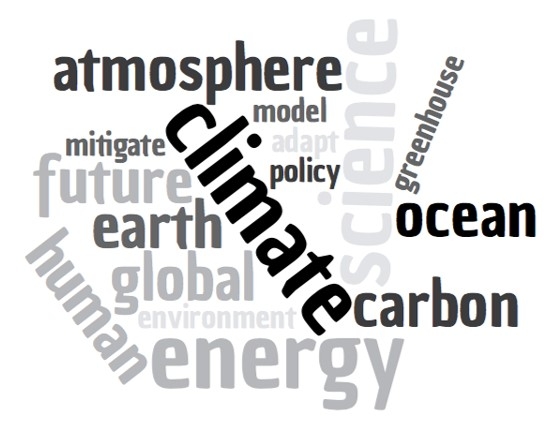Text and image by guest blogger Olivia Cooper. Olivia is an undergraduate at Smith College in Northampton, Massachusetts. She worked with former California Naturalist founding director Dr. Adina Merenlender on the research presented in this blog post.
In order to probe this question, UC California Naturalist founding director, Adina Merenlender, and I embarked on an independent research project, focusing on what makes up climate literacy, according to a sample of higher education climate change syllabi. A syllabus (or its plural, syllabi) is a document shared with students enrolled in a class. It provides an outline of course content, expectations, and learning objectives. My primary job was to find, analyze, and interpret climate change syllabi content available online. I searched the internet for public access syllabi, collected, cleaned, and sorted through data, the titles and descriptions that comprise climate change education. Next, I tossed the individual words together, simmering down the mixture with coded categories, baking at 350º for a few weeks of analysis, all to produce a collection of pie charts and hierarchical clusters rich with information about the components of climate change education.
Diving into the data, we found a clear emphasis on biogeophysical sciences, strength in social sciences and consequences, and some gaps in climate change communication strategies. We also noted a few gaps in the finer categories of climate literacy. While the hard sciences dominated the syllabi, terms related to conservation, biodiversity, and non-human species or systems were relatively rare. Place-based solutions terms were also not well represented in the syllabi, even though relevance to local context would be more relatable and foster dialog among the students, and is a key strategy to increase climate science literacy. Another notable gap was next steps--mitigation, adaptation, and communication terms were not consistently included in the syllabi.
Gaps like those we found in our sample of syllabi illustrate the increased need to address the interdisciplinary nature of climate literacy. For example, we know that focusing on tangible solutions and highlighting success stories increases motivation, efficacy, and persistence in utilizing new knowledge pertaining to climate change, as this encourages environmental stewardship through feelings of connection and attachment to place. It is insufficient to understand only the geology, biology, chemistry, and physics of climate change, although these areas are essential. Beyond understanding the biogeophysical sciences and social sciences at play, it is important to address how we directly interact with and are affected by this global change—what traumas are being faced by different groups, how can we mitigate and adapt to these changes, and how can we act? Even further, how do we include others in this network of climate literate people, and how can we communicate our climate literacy responsibly and effectively? Overall, we found the curricula to be very strong regarding both the biogeophysical and social mechanisms and consequences of climate change, and to generally cover potential solutions to climate change. It may benefit by including more discussion on how to understand rhetorical strategies to effectively communicate and process this global crisis.
To read the full publication, please see Cooper O, Keeley A,Merenlender A. Curriculum gaps for adult climate literacy. Conservation Science and Practice. 2019; e102.
The Climate Stewards Initiative is currently conducting a needs assessment to inform content creation for the course curriculum. If you would like to contribute to the formation of this new course, please follow this link.
If you have questions about the UC Climate Stewards Initiative, please contact Sarah-Mae Nelson (408) 482-4633; smanelson@ucanr.edu
